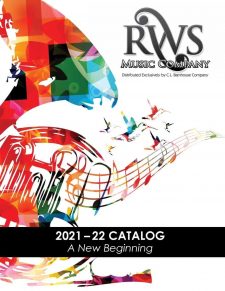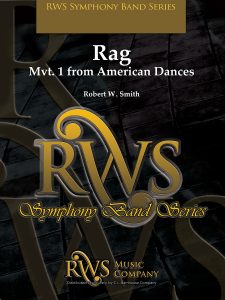An article written by Robert W. Smith for the Music For All Newsletter
As middle school band directors, we are challenged with an enormous task and responsibility as we work with students beginning their instrumental music journey. From their decision to join the band to the crucial step of selecting an instrument, each stage is important to our goal of creating lifelong musicians and independent music-makers.
In the countless teaching objectives addressed during the middle school years, what are the basic skills and concepts our students must take from our classroom as they continue their music education? I would offer a short, yet critical list of musical objectives for your consideration. Using alliteration as a tool, I suggest we “teach to a T” in the following content areas:
- Time
- Tone
- Tune
- Technique
- Transition To The Next Tier
Time – We have long recognized the importance of developing/refining/reinforcing a sense of steady beat at this critical stage of student development. From walking to talking, a steady beat is at the very core of our lives. The study of music and performance in an ensemble setting allows students to find not only a sense of pulse, but “fit in” to a larger group. With the average human heart between 60 and 100 beats per minute, is it any wonder why our young beginning band students are most comfortable performing together at approximately 80 beats per minute?! As teachers, we must develop and reinforce a sense of steady beat, then explore various tempi at increasing distances from the human heart rate.
Tone – Developing and producing a characteristic tone on the instrument has long been a goal of musicians at all stages of musical study. At this stage however, I believe it is most important to begin with the student’s perception of characteristic tone. Simply stated, if they can hear it, they will be able to play it…eventually! The use of recordings in lieu of live performance models is a viable teaching strategy. In addition to instrumental models, it is equally important for students to hear ensembles to develop a sense of band sonority. Give them viable models combined with the proper technique and a beautiful tone is in their future!
Tune – Matching pitch is one of the most challenging skills at any level, much less at middle school! I believe it is important to teach students to effectively hear/identify intonation issues before applying those skills to their personal playing. In today’s world of technology, I fear that many of our students look at intonation as a visual skill as they use portable tuners. We must be sure they are actually hearing the pitch as they strive to visually center the needle or change the color of the tuner light. Ear training recordings as well as tuning trainer apps on personal devices makes this easier now than ever before. I also believe that we must include the tuning of octaves in this initial stage of instruction. The young tubist is challenged as they try to tune to a reference pitch that is most likely two octaves above their tuning pitch. Simply stated: Let’s teach students to hear, then apply.
Technique – Developing strong fundamental technique is at the very heart of our daily teaching responsibilities. From proper embouchure to correct hand position/posture, the fundamental skills we teach today affect the musician’s success long into the future. As a composer of band literature at all levels, I am sensitive to the technical development of our student musicians throughout their journey. I am also aware that certain aspects of young band literature can be performed without great attention to detail. However, it is our responsibility to teach for the future. For example, if we do not insure proper hand position, these students will hit a proverbial wall some time in the near future as they encounter passages that require impeccable hand position to perform. To quote a respected teacher from a past generation, we must “teach for the long haul!”
Transition To The Next Tier – We must prepare our students for the transition to the next tier of musical performance. Have we provided them with a vision for their musical future? As a young Little League baseball player, I, along with countless millions, had dreams hitting a home run in college or the major leagues. I could see myself far into the future in the sport. Can our students project themselves into their musical future and see themselves performing in various high school, college and professional ensembles? Do they realize the wide world of music ahead of them in ensembles/genres outside of our school programs? We must give them a vision of the future and help them in their transition to the next level.
Thank you for your shared passion for music and music education. In the words of a famous golfer, we are now “teed up” and ready to swing. Best wishes in all of your musical endeavors!
Robert W. Smith






